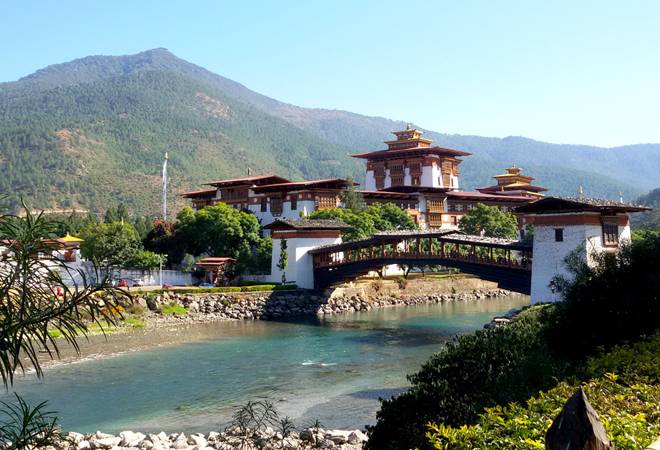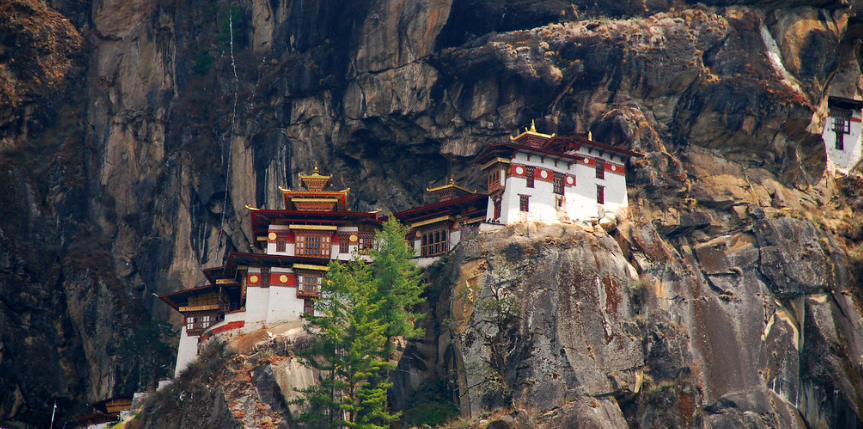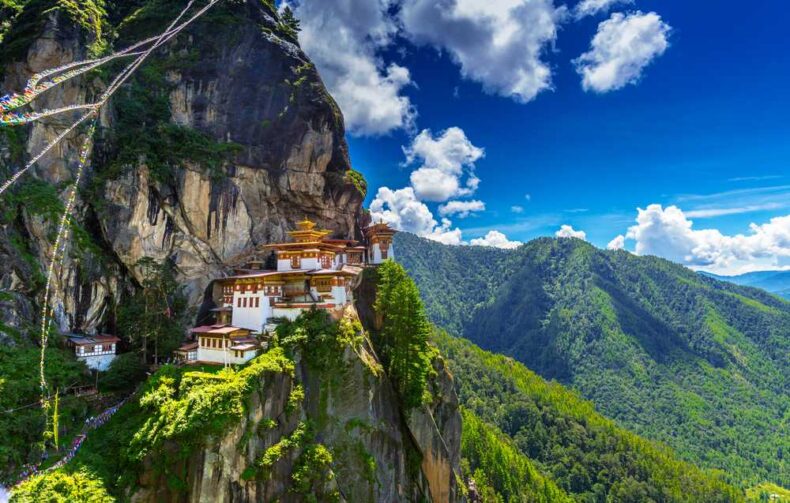By- G Brinda
Bhutan reopened its gates to visitors on September 23 after keeping them closed for more than two years to stop the spread of COVID-19 as part of its efforts to boost a flagging economy.
With 93 foreign visitors anticipated to arrive on Friday, the new tourism policy for Bhutan was unveiled by V. Namgyel, the country’s ambassador to India.
Bhutan, a nation of over 7,00,000 inhabitants, also unveiled its “high value, low volume” tourism programme, which focuses on improving its sustainable development policies, upgrading its infrastructure, and elevating the tourist experience.
The government intends to charge visitors a “SDF” (sustainable development fee) as part of this new programme. India, Bangladesh, and Maldives visitors would now need to pay a daily fee of Rs 1,200 while they are there. The cost for visitors from other countries is $200 each night, or roughly Rs 16,000.
Additionally announced in 2019, this price was unable to be enforced due to limitations imposed by the Covid pandemic.
“One of my country’s most significant sectors and sources of foreign exchange earnings is tourism. Our economy and people’s way of life were severely impacted when we closed our borders in March 2020 and imposed strict measures against Covid-19, said Namgyel at the ceremony.

“Never letting a good crisis go to waste,” the speaker said, “we used the time to ponder on how to revive and enhance the tourism industry.”
There will be additional charges in addition to SDF. Bhutan’s official airline, Drukair, would charge more for tickets than it did before the outbreak.
Bhutan reopened its borders today after closing them to visitors from other countries for 2.5 years due to the Covid epidemic. A new tourism tax, known as the Sustainable Development Fee, was implemented along with the reopening. Bhutan increased its Sustainable Development Fee, which was formerly $65 per visitor per night for foreign visitors, to $200 per visitor per night.
Before the pandemic started, there was no fee for Indians, but according to the guidelines, they now had to pay Rs 1200. However, the altered cost for visitors from India was never put into effect. Bhutan closed its borders to tourists in March 2020 after discovering its first COVID-19 case, which was a significant source of cash.
Although the Himalayan Kingdom, home to less than 800,000 people, has reported fewer than 61,000 infections and only 21 fatalities, its economy has struggled in recent years, contributing to an increase in poverty.
In order to ensure the sustainable use of tourism resources and to foster a thriving, non-discriminatory, inclusive, and high-value tourism industry in Bhutan, the government of Bhutan has revised its “High Value, Low Volume” tourism policy, according to Jigme Thinley Namgyal, Bhutan’s Consul General to NDTV.
Bhutan, which is sandwiched between India and China and is renowned for calculating gross national happiness, seeks to attract more wealthy visitors. “Being carbon neutral has its own costs, but tourism is a valuable national resource. To make our tourism sustainable, we are building our infrastructure. This is the main justification for this levy, “said the Consul General.

What is the state of the fees right now?
Tourists from the three nations had previously been spared from paying the tax, which other nationals had to pay during peak season is $250 (Rs 20,000) per person per day and during low season is $200 (Rs 16,000) per person per day. The low season lasts from December to February during the winter and from June to August during the rainy season.
This includes the entry charge, a $65 “tourism levy” or “sustainable development fee (SDF)” (formerly known as “royalty” to the government), lodging, transportation within Bhutan, a tourist guide, food, and non-alcoholic beverages. It also includes the cost of the visitor’s visa.
However, “regional visitors” are exempt from the minimum expenditure floor of $200/250 and can visit Bhutan without a visa. Indian, Bangladeshi, and Maldivian tourists are referred to as regional tourists. Indian tourists therefore had the freedom to decide how much they could spend on their vacation, including for lodging and food.
Why this change?
In response to an increase in Indian tourists, the decision has been made to safeguard the nation’s nature. According to the Bhutanese publication Kuensel, more than 2 lakh “regional visitors” visited Bhutan in 2018.
The majority of tourists visiting Bhutan are from India; of the 2,74,000 visitors in 2018, more than 1,80,000, or nearly 66%, were from this country.
This was a sizable untapped cash stream because Indians do not pay visa fees, SDF, or the daily floor expenditure.
Locations that are exempt
Tourists visiting 11 districts in the area will not be charged the SDF in order to promote tourism in the less well-known Eastern Bhutan. This exception will remain in effect until December 2024, at which point the new administration will determine whether to keep it.













